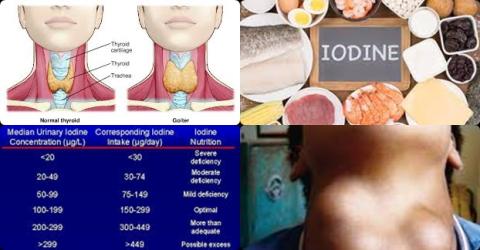
Objectives:
Over the past decade, the phenomenon of high urine iodine (HUI) and high water iodine (HWI) has become more common. But the risk of goiter caused by different levels of HUI and HWI remains unclear. Therefore, this review article has been conducted.
Does higher concentration of urinary iodine or water iodine increase the risk of goiter among school children?
Study design:
This review article included 10 cross-sectional studies with 104,645 subjects (49,244 subjects from the urinary iodine concentration (UIC) ≥ 300 μg/L group and 55,401 subjects from the 100-300 μg/L group/reference group).
The result of the Begg’s test and Egger’s test were p = 0.163 > 0.1, indicating that there was no significant publication bias.
Results and conclusions:
The investigators found that a UIC ≥ 300 μg/L was significantly associated with an increased risk of 74% [OR = 1.74, 95% CI = 1.50 to 2.01, p 0.001] for developing a goiter compared to a UIC from 100-300 μg/L.
The investigators found in subgroup analyses, a UIC 300-500 μg/L was significantly associated with an increased risk of 67% [OR = 1.67, 95% CI = 1.42 to 1.97, p 0.001] for developing a goiter compared to a UIC from 100-300 μg/L.
The investigators found in subgroup analyses, a UIC 500-800 μg/L was significantly associated with an increased risk of 78% [OR = 1.78, 95% CI = 1.57 to 2.00, p 0.001] for developing a goiter compared to a UIC from 100-300 μg/L.
The investigators found in subgroup analyses, a UIC 800-1000 μg/L was significantly associated with an increased risk of 113% [OR = 2.13, 95% CI = 1.56 to 2.91, p 0.001] for developing a goiter compared to a UIC from 100-300 μg/L.
The investigators found in subgroup analyses, a UIC ≥ 1000 μg/L was significantly associated with an increased risk of 111% [OR = 2.11, 95% CI = 1.40 to 3.18, p 0.001] for developing a goiter compared to a UIC from 100-300 μg/L.
The investigators found in subgroup analyses the overall risk of high iodine causing goiter development was OR = 1.84 [95% CI = 1.63 to 2.07, p 0.001].
The investigators found, if the water iodine concentration (WIC) was greater than 100 μg/L, the OR between goiter development and WIC was 4.74 [95% CI = 1.15 to 19.46, p = 0.001].
The investigators found the linear trend analysis of high urinary iodine (HUI) and goiter showed that the prevalence of goiter increased with the increase of UIC [χ2 = 734.605, p 0.001].
The investigators concluded when the urinary iodine concentration ≥ 300 μg/L or the water iodine concentration ≥ 100 μg/L, the risk of goiter development among school children will increase. The higher the urinary iodine concentration, the greater the risk of goiter development. Further researches needed to be done to explore the relationship between high iodine levels and goiter development in newborns, pregnant women and the elderly.
Original title:
The relationship of different levels of high iodine and goiter in school children: a meta-analysis by Xu T, Ren Z, [...], Zhang W.
Link:
https://www.ncbi.nlm.nih.gov/pmc/articles/PMC8094504/
Additional information of El Mondo:
Find more information/studies on RCTs/cohort/significantly/review article, iodine and food fortification/malnutrition right here.